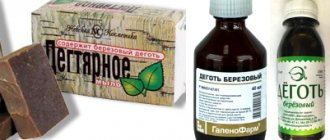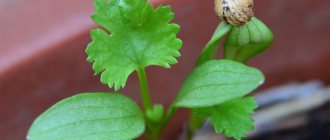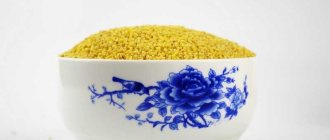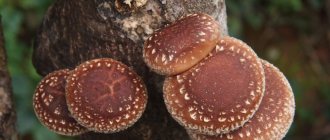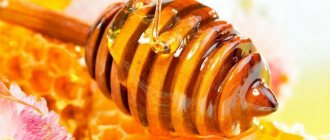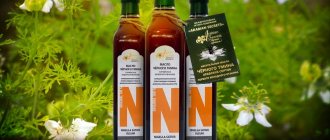Polypore is the general name for a group of parasitic fungi that grow on the trunks of living and dead trees. In nature, they act as “orderlies” of the forest, decomposing organic compounds into mineral ones. Despite the fact that the fungus destroys plant wood, it has a powerful healing effect on the human body. In medical practice, the most commonly used medicinal types of polypores are: reishi, sulfur-yellow, larch, birch. The composition of their fruiting bodies includes many useful substances, in particular polysaccharides, phytosterols, triterpenes, essential oils, resins, anthocyanins, vitamins, micro- and macroelements.
Polypore activates natural antitumor immunity, reduces the risk of ischemia, increases cognitive functions of the brain, and normalizes rheological parameters of the blood. Preparations based on it are indicated for all types of cancer, hepatitis, tuberculosis, asthma, nervous exhaustion, and liver disorders.
Botanical description
Content:
- Botanical description
- Popular varieties
- Beneficial features
- Reishi mushroom against cancer
- Reishi protects the cardiovascular system
- Traditional medicine recipes
- Conclusion
The tinder fungus consists of a fruiting body and mycelium, which are formed by thin colorless threads (hyphae). At the same time, most of it (the mycelium) is located in the body of the plant, and only the reproductive organs are “exposed” to the outside. Interestingly, the hyphae of the parasite penetrate into wood not by force, but by secreting enzymes that dissolve its cell membranes. As a result of these processes, cracks form in the bark of the “host”, into which fungal spores easily penetrate. After the mycelium grows, the fruiting body “emerges” onto the surface of the tree. Visually, it resembles an inverted saucer, which is half grown into the trunk. Moreover, the shape and structure of its pulp directly depends on the type of mushroom.
The fruiting bodies of polypores can be fleshy, filmy, woody, leathery, corky and fibrous. The color of their surface varies from light white to dark brown. They come in different shapes: prostrate, sessile (attached to the side), differentiated (with a cap and a stalk). The diameter of round mushrooms is 5-30 cm, and the length of elongated fruiting bodies is 0.5-1.2 m.
Medicinal properties and use of false tinder fungus in medicine
In folk medicine, fruiting bodies are used as a hemostatic agent. They are widely used in the field of gynecology. One of the indications is uterine bleeding. Products based on false tinder fungus help eliminate tumors. They are recommended as part of combination therapy for malignant neoplasms. Taking drugs from fruiting bodies helps prevent metastases.
Drugs help improve digestion. The mushroom includes components that have a positive effect on the functioning of the immune system. Powder extract from fruiting bodies is prescribed for liver diseases.
Popular varieties
Currently, there are more than 1,500 species of tinder fungi, most of which are classified as conditionally edible mushrooms.
The most popular varieties:
- Larch (real). These mushrooms are characterized by a prostrate fruiting body (20-30 cm long), painted in a dirty white shade. In young plants the flesh is soft and elastic, in mature plants it is hard and crumbly.
Larch polypore is not edible, but is used for medicinal purposes to prepare infusions, decoctions and powders aimed at removing toxins and carcinogens from the body, destroying pathogenic flora of the liver, lungs, bile ducts, accelerating metabolism (for weight loss). Most often it grows on dead wood and fallen trees.
- Flat (sulfur yellow). A characteristic feature of the mushroom is its voluminous dark-golden cap (20-30 cm in diameter), visually reminiscent of polyurethane foam. On the surface of the fruiting body there are often uneven ridges covered with a dense matte peel.
The sulfur-yellow polypore is edible only at an early age, since the caps of overripe plants are excessively hard. In addition to the food industry, the mushroom is used in pharmacology for the production of drugs aimed at combating rheumatic tuberculosis, esophageal cancer, impotence, stomach ulcers, diabetes mellitus, and liver diseases.
- Lacquered (reishi). A distinctive feature of the mushroom is a shiny, vermilion-like cap set on a lateral voluminous stalk. At the same time, the color of its fruiting body can vary from bright orange to dark red.
The lacquered polypore is used exclusively for medicinal purposes, since the mushroom is inedible. This is a powerful immunomodulator with pronounced antioxidant properties. It is believed that the mushroom is able to suppress the growth of cancer cells and is useful for people suffering from arthritis, rheumatism, asthma, and respiratory diseases.
Research into reishi on the possibility of its use for medicinal purposes continues to this day.
- Umbrella. The rarest species of tinder fungus, listed in the Red Book. The fruiting body of the mushroom consists of many small brown caps bordered by multi-colored wavy stripes. The culture grows in places with high humidity, especially at the base of stumps and trunks of beech, maple, birch, and hornbeam.
The umbrella tinder fungus is classified as an edible mushroom.
- Birch. A mushroom with spherical fruiting bodies, light flesh and smooth gray-white skin. This parasite grows exclusively on birch tree trunks. On its basis, medicines and biologically active complexes are created aimed at restoring intestinal function (eliminating constipation), increasing the body’s immune response, and calming the nervous system. The mushroom weakens appetite, has strong diuretic properties, due to which it is used for weight loss.
At an early age, birch tinder fungus can be used as food.
In addition to their medicinal and nutritional value, mushrooms are an important component of the cycle of substances in nature. Polypores, decomposing organic compounds into mineral ones, have a positive effect on the soil biocenosis.
Appearance
Scaly tinder fungus is a spotted woody delicacy.
The cap is juicy, fleshy, about 30-40 cm in diameter, kidney-shaped in youth, later spread out, with a slight depression in the center and thin, wavy, curved - drooping edges. The color of the cap is yellowish-grayish, and on top it is covered with characteristic dark brown scales arranged in symmetrical circles - waves.
The hymenophore is tubular type, light yellowish, with angular, large cells. White spore powder.
The leg is short and thick, up to 10 cm long, up to 4 cm wide, and has a lateral or eccentric location. The color of the leg is the same as that of the cap, darker at the base, and it is also covered with brown scales.
The pulp of young specimens is white-cream in color, dense and juicy, smelling incredibly pleasantly of pastry or honey. In old fruiting bodies, the pulp becomes wooden-hard, therefore, it is usually not eaten, but retains its edibility and pleasant smell.
Beneficial features
Even in ancient times, people discovered that the pulp of polypores has antiseptic, hemostatic and antitumor effects. However, their pharmacological value was proven only in the middle of the 19th century (during numerous laboratory studies). Thus, one of the achievements of modern medicine was the discovery of the polysaccharide lanophil, contained in the fruiting bodies of polypores. This substance has a powerful hepatoprotective effect on the body, as a result of which bile secretion increases and the structure of the liver tissue is restored. In view of this, the product is used in dietary regimens to stimulate weight loss, correct functional disorders and normalize metabolism.
Properties of tinder:
- Binds heavy metal ions, removes carcinogens and radionuclides from the body.
- Dilates coronary arteries, reduces the risk of cardiac ischemia, and has a cardiotonic effect on the myocardium.
- Increases cerebral circulation, improves memory, and prevents tissue hypoxia.
- Disinfects the organs of the genitourinary system, suppresses the growth of pathogenic flora.
- Improves fat metabolism, prevents the adhesion of “bad” cholesterol to the walls of blood vessels.
- Activates natural anti-cancer immunity, strengthens the body's resistance to bacterial and viral infections.
- Promotes gentle bowel movement.
- Stimulates the synthesis of immunoglobulins, reduces the intensity of allergies.
- Improves the functional state of the pancreas, stabilizes blood sugar levels.
- Stimulates the production of endorphins, improves mood, increases the resistance of the nervous system to psycho-emotional stress.
However, only an environmentally friendly mushroom that does not contain pesticides and radionuclides can be beneficial. In view of this, you should be selective in the choice of products purchased. Indicators of low-grade raw materials are low cost and lack of a quality certificate.
Indications for the use of tinder (as prescribed by a doctor):
- pathologies of the cardiovascular system (arterial hypertension, ischemia, thrombosis, atherosclerosis, thrombophlebitis, obliterating endarteritis, stroke, heart failure, heart attack);
- diseases of the respiratory organs (bronchitis, pneumonia, tracheitis, pleurisy);
- malignant and benign neoplasms (cancer, melanoma, sarcoma, polyps, pituitary adenoma, cysts, mastopathy);
- autoimmune dysfunctions (allergic reactions, neurodermatitis, systemic lupus erythematosus, hay fever, thyroiditis, multiple sclerosis, scleroderma, bronchial asthma);
- dermatological diseases (atopic dermatitis, eczema, psoriasis);
- liver pathologies (viral hepatitis, cirrhosis, hepatosis, dystrophy);
- nervous disorders (neurasthenia, depression, chronic fatigue syndrome, epilepsy).
- pathologies of the digestive tract (dysbacteriosis, gastritis, ulcers, constipation);
- alcoholism.
Despite the wide range of pharmacological effects, tinder fungus should not be used for hemorrhagic diathesis, hemophilia, uterine bleeding, anemia, pregnancy, lactation, low blood clotting, and childhood (under 7 years).
Remember, overuse of mushrooms can lead to vomiting, nausea, dizziness, toxic poisoning, and allergic rash. To avoid a negative reaction from the body, fruiting bodies and preparations based on them are consumed only as prescribed by a doctor in strictly prescribed quantities.
Medicinal properties of scaly polypores
On the pharmaceutical market, fruiting bodies are added to various preparations aimed at restoring the functions of organs and systems lost due to poisoning.
Important! The fruiting bodies contain the substance lecithin, which is used to develop drugs that have an antitumor effect.
The scaly tinder fungus is capable of not only removing poisons, but also heavy metals and gases, and has an antioxidant effect.
In traditional medicine, decoctions and infusions are made on its basis to restore the functioning of the gallbladder, and ointments are also made for osteochondrosis, varicose veins and arthrosis. Scaly polypore is known as an antifungal agent.
Reishi mushroom against cancer
Reishi (lacquered tinder fungus) is one of the most popular medicinal mushrooms on the planet, used in medical practice for more than 4 millennia (especially in the East). In ancient times, the culture was available only to members of the imperial family, since the cost of a gram of fruiting bodies was equal to 1 gram of gold.
Interestingly, reishi mushroom is superior to even Siberian ginseng in its immunomodulatory properties.
In 1980, a group of scientists from Japan's Shizuoka University and the National Cancer Center isolated the powerful antitumor element beta-glucan from polypore. Its main pharmacological effect is to stimulate specific cellular immunity and increase the body's defenses. When the substance is introduced into the blood, the polysaccharide binds to the surface of cells responsible for anticancer protection. As a result, natural killer cells, macrophages and cytotoxic T-lymphocytes are activated.
It is interesting that in the body of a healthy person there is a continuous destruction of atypical structures. In this case, macrophages quickly recognize and eliminate altered cells. Along with this, T-lymphocytes come close to the malignant elements, releasing polymer proteins (perforins, granzymes) onto its surface. This substance is embedded in the membrane of the cancer cell, making a “perforin hole”, as a result of which it dies. If the first protective factors do not work, natural killers enter the fray. However, with constant stress, consumption of junk food, and excessive physical activity, a decrease in their functional activity is observed. Due to this, the risk of tumor processes increases 3 times. In addition, in cancer patients, cells are in a depressed state and are often represented by young immature forms (not capable of active action).
Antitumor effects of beta-glucans concentrated in the bodies of polypores:
- Macrophages are activated, which leads to an increase in their absorption capacity.
- They accelerate the maturation of lymphocytes, resulting in the formation of many mature, combat-ready killer cells.
- They enhance the cytolytic activity of protective proteins (perforins and granzymes).
- Increase the life cycle of natural killer cells, macrophages and T-lymphocytes.
- Stimulates the synthesis of Tumor Necrosis Factor (interleukins and TNF-alpha).
In addition to glucans, reishi fruiting bodies contain substances that block the development of the circulatory system of cancer (sodium pyroglutamate and ergosterol). As is known, a tumor releases a substance into the blood (vascular growth factor), under the influence of which the body triggers the “building” of new capillaries for the tumor (to obtain nutrients). When reishi mushroom is consumed, the synthesis of vascular growth factor is sharply inhibited, as a result of which the neoplasm and its metastases gradually “dry out.”
Description of the scaly tinder fungus
The scaly tinder fungus has an unusual appearance, which makes it easy to distinguish it from other varieties of the Polyporaceae family.
Description of the cap
Its diameter ranges from 10 to 40 cm. The cap is leathery, dense and fleshy, shaped like a fan. It is light yellow in color interspersed with a dark brown hue, reminiscent of scales arranged symmetrically in a circle. The cap is slightly depressed at the base. In young fruiting bodies it is kidney-shaped, but expands as it grows.
The flesh of the variegated mushroom is dense, with a pleasant aroma. As it grows it becomes woody
The photo of the scaly tinder fungus shows that the spores in the cap are large and angular in shape.
Description of the leg
The leg reaches 10 cm in length and does not exceed 4 cm in diameter. At the base the leg is denser, at the top it is like a mesh, loose. Below it has a black-brown color, but at the cap its color changes to whitish.
The scaly polypore has both straight and curved legs. More often they grow to the side of the cap
Varieties of scaly polypores
There are fruiting bodies related to the pest:
- Lumpy tinder fungus. It belongs to the category of inedible, prefers to grow at the roots of trees. The hat has a fan shape and is hard to the touch. Its color is very diverse: fruiting bodies are found in various shades of brown and orange.
- The cellular tinder fungus belongs to the category of edible fruiting bodies. His hat is oval-shaped, orange, reddish or yellow. Dark depressions are visible on its surface. The leg is smooth and short. The pulp of this variety is very hard and does not have a pronounced taste or aroma.
Important! Although the honeycomb polypore is edible, due to its low taste characteristics it is preferred not to collect it.
Where and how do scaly polypores grow?
Mushrooms prefer to grow on trees whose immunity is weakened. It is possible to meet them in parks and deciduous forest plantations.
According to the photo and description, the scaly tinder fungus prefers to grow singly or in groups, and is prone to the formation of fan-shaped colonies
Fruiting for scaly polypores lasts from May to August. Most often, mushrooms are found in the southern regions. This variety practically does not grow in the middle zone. Mushroom pickers also harvest in Europe, North America, Crimea, Kamchatka, the Far East and the Krasnodar Territory.
Most often it grows on elm, maple and beech, and is not found on coniferous trees.
Doubles and their differences
Among the fungi that are similar to the variegated variegated mushroom is the tuberous tinder fungus. His cap grows from 5 to 15 cm and has a yellow-reddish tint. Over its entire surface there are small brownish scales, forming a symmetrical pattern. As the fungus grows, it becomes less noticeable.
The main difference from the scaly polypore is the presence of large pores and a stalk located in the center.
The mushroom has a smaller size
The scaly polypore's counterpart is edible, but it is rarely eaten: the fruiting bodies do not have a pronounced taste and are often attacked by pests in the early stages of development
Reishi protects the cardiovascular system
The cardiological effects of tinder fungus are associated with the presence of organic germanium in its composition. This element improves blood circulation in the body, as a result of which the risk of tissue hypoxia is halved. Scientists believe that when germanium enters the bloodstream, it behaves like hemoglobin.
Benefits of reishi mushroom for the cardiovascular system:
- Helps reduce platelet aggregation in the blood, reduces the risk of strokes and heart attacks.
- Dilates the coronary arteries, supports the myocardium during oxygen starvation.
- Has a moderate cardiotonic effect, reduces the negative effects of prolonged heart failure.
- Reduces heart rate and load on the myocardium, increases the elasticity of the valves.
Along with this, germanium, which is part of the tinder fungus, has antifungal, immunomodulatory, antitumor, antiviral and radioprotective effects on the body.
To enhance the pharmacological effect, drugs based on a parasitic fungus are taken together with organic vitamin C (L-ascorbic acid).
Description and characteristics of a conditionally edible mushroom
The scaly tinder fungus is also called the motley tinder fungus, the variegated tinder, the hare, and the elm. Latin names: Cerioporus squamosus, Polyporus squamosus, Melanopus squamosus, Polyporellus squamosus. The mushroom belongs to the Polyporaceae family, genus Cerioporus and is conditionally edible.
The Tinder fungus is essentially a parasite that feeds on tree sap. It penetrates weakened trunks in the form of spores and grows there, forming a mycelium.
The cap has the shape of a kidney; as the fetus matures, it becomes flat and spread out. It can reach 30 cm in diameter. It is very fleshy and thick, and may be slightly depressed at the base. The surface of the cap is leathery, yellow in color, covered with dark brown scales. The scales are placed on its surface in symmetrical circles. The edges are fan-shaped and thin. The caps on the fruiting bodies are arranged like tiles.
Hymenophore - the lower part of the cap, tubular, yellowish in color. The tubular layer has large angular pores.
The pulp is juicy, dense, whitish-cream in color, and has a pleasant aroma, similar to the smell of half-baked baked goods; sometimes the smell emitted by the mushroom is reminiscent of honey. In old pieds, the flesh becomes woody.
The tinder fungus has a thick lateral leg, which is sometimes eccentric. Its width can reach four centimeters, and its length can reach ten. The surface of the leg, like the cap, is covered with brown scales, the base is darker, and the lower part is lighter, with a mesh pattern.
A little history
Research into the genus Cerioporus began at the end of the 19th century. The mushroom was first described and given its binomial name by William Hudson in 1886. Information about the species increased gradually, and in the forties of the twentieth century, mycologist Oleg Svotsky first added the scaly tinder fungus to the systematization, describing its characteristics.
Traditional medicine recipes
To create medicinal potions, the following medicinal types of polypores are used: real, varnished, birch, larch. These mushrooms are used as an adjuvant for the prevention and treatment of functional disorders.
Express blood cleanser
Grind the dried fruiting bodies of the mushroom into powder. Dosage regimen: 1-2 days – 5 g of raw material every 2.5 hours with 100 ml of clean water (10 minutes before meals). From the 3rd day they switch to a three-time regimen of powder consumption (observing the indicated dosage). The course of treatment is 1-2 months. The product is effective for poisoning, allergies, infectious pathologies and liver diseases.
Composition for stimulating weight loss and sputum discharge
Pour 15 g of crushed tinder fungus into 200 ml of hot water. Place the container with the mixture in a water bath for 30 minutes. After this, leave the composition in a warm place for at least 4 hours. The finished product is taken four times a day 15 minutes before meals. In addition to stimulating weight loss, the drug is used to improve sputum discharge in pneumonia, bronchitis, pleurisy, and tuberculosis.
External remedy for healing skin lesions
Pour 30 g of mushroom powder into 150 ml of vodka. Leave the mixture in a dark place for 14 days. Strain the finished product through cheesecloth and then use it to irrigate damaged skin (ulcers, cuts, scratches). In case of suppuration of the dermis, before using the infusion, the wound should be washed with a solution of furatsilin (1:5000) or hydrogen peroxide (3%).
Medicine for hepatitis
Soak the dried tinder fungus in cold water (3-4 hours), and then pass through a meat grinder. After this, combine the crushed raw materials (200 g) with warm boiled liquid (1 l). Infuse the medicinal mixture for at least 2 days in a dark place. Then strain the solution through a sieve and mix with the water in which the mushroom was soaked. The composition is taken 150 ml three times a day (before meals).
Multifunctional mushroom tincture. Combine 50 g of crushed tinder fungus and 500 ml of natural wine (preferably Cahors). Leave the sealed container with raw materials for 14 days in a cool place. Consume the infusion three times a day, 5-15 ml. The course of admission is 3-4 months.
The oil composition helps get rid of allergic rhinitis, increased blood viscosity, and excitability of the heart muscle. Along with this, the drug is used to suppress the tumor process (in the first stages).
Oil composition for atherosclerosis, hypertension, mental disorders
To create the infusion you will need: 23 g of dried crushed mushrooms and 250 ml of natural olive fat. After mixing, the solution is kept in a dark place for 14-21 days. The oil composition is consumed twice a day, 5-15 ml (depending on the severity of the disease). The course of treatment is 3-4 months.
Antitumor tincture
Best materials of the month
- Coronaviruses: SARS-CoV-2 (COVID-19)
- Antibiotics for the prevention and treatment of COVID-19: how effective are they?
- The most common "office" diseases
- Does vodka kill coronavirus?
- How to stay alive on our roads?
Mix 45 g of mushroom powder and 500 ml of vodka. Leave the solution in a dark place for 15 days. Do not strain. To suppress the tumor process, the composition is taken twice a day, 10 ml (preferably half an hour before meals).
Remember, drugs based on tinder fungi cannot be combined with painkillers, anticoagulants, antihypertensive drugs, aspirin, antibiotics, amphetamines, and medications that lower blood sugar. In addition, taking the mushroom should be stopped at least 2 weeks before surgery, including tooth extraction procedures.
Recipes for making scaly polypores
The scaly polypore can be eaten, but it requires pre-treatment. The taste of the mushroom depends on the correctness of the procedure.
Cleaning and preparing mushrooms
In order to preserve the beneficial properties of tinder fungus as much as possible, you need to be able to prepare it correctly.
Only young fruiting bodies can be eaten: they are assigned the fourth edibility group
Old polypores are scaly and hard, which negatively affects their taste. They should be processed immediately after returning from the forest. To do this, the fruiting body, cleared of dirt and debris, is placed in water for 12-24 hours. If this procedure is neglected, the scaly polypore will become woody, which will negatively affect its taste.
Important! When soaking, the water should be changed every 1-1.5 hours.
At the end of the procedure, the mushroom should be pulled out, the scales removed from the cap, and the stem cut off. It is unsuitable for food as it is very hard.
How to make soup with scaly polypores
In order not to spoil the taste of the dish, young fruiting bodies should be used after pre-treatment.
Ingredients:
- mushroom – 0.5 kg;
- medium-sized carrots – 1 pc.;
- onion – 1 pc.;
- potatoes – 4 pcs.;
- greens to taste;
- vegetable oil.
Mushrooms should be thoroughly washed, stems cut off and scales removed. Grind the tinder fungus in any way.
In soup, the edible scaly polypore gives it a rich aroma and taste, so it is preferable to grate it.
Place a container of water on the stove and put mushrooms in it, lightly salt the broth. After the liquid boils, remove the foam that has formed on its surface with a slotted spoon. Then the soup needs to be simmered over low heat for 30 minutes.
While the broth is cooking, use a coarse grater to chop the carrots and cut the onion into cubes. Fry the vegetables in a small amount of oil.
The potatoes should be crushed, cut into cubes, then added to the broth along with onions and carrots. Simmer the soup for 15 minutes until the potatoes are ready.
Serve the soup on the table, first sprinkled with herbs.
How to cook fried scaly polypore mushrooms with onions
Main ingredients:
- scaly tinder fungus – 500 g;
- onion – 2 pcs.;
- greenery;
- salt pepper;
- vegetable oil.
Before cooking tinder fungi, they should be washed, chopped and boiled for 15-20 minutes.
Pour oil into a frying pan and heat well. Chop the onion as desired, then fry until golden brown. As the vegetable cooks, add mushrooms and simmer for 15 minutes.
When serving, sprinkle the finished dish with herbs.
Scaly tinder fungus stewed in sour cream
A common dish made from the scaly tinder fungus is pied fish stewed in sour cream.
Main ingredients:
- onion – 1 pc.;
- mushrooms – 0.5 kg;
- greenery;
- sour cream 20% – 200g;
- salt pepper;
- vegetable oil.
Grind the scaly polypore and boil it. Cut the onion into cubes and fry in a frying pan until transparent. Add mushrooms, salt and pepper to the vegetable, mix well. Simmer the dish over low heat for 10 minutes, then add sour cream and leave to simmer for another 10 minutes.
Sprinkle the finished mushrooms in sour cream with herbs; potatoes or rice are good as a side dish
Delicious cutlets made from scaly tinder fungi
The resulting cutlets can be used as a separate dish or you can prepare a side dish of potatoes for them separately.
Ingredients:
- onion – 1 pc.;
- garlic – 2-3 cloves;
- variegates – 500 g;
- egg – 1 pc.;
- bread – 50 g.
The mushrooms should first be boiled for 15-20 minutes, then minced through a meat grinder twice until you get “minced meat” of a uniform consistency.
To the scaly tinder fungus, add onion, garlic and bread, crushed into a pulp, and mix everything. Add egg, salt and pepper to the finished mixture. The finished mass should turn out pasty.
Pour oil into a frying pan and heat it thoroughly. Form cutlets from the mixture, roll them in breadcrumbs or corn flour, and fry until golden brown, covered.
It is recommended to serve the cutlets with salad; you can decorate them with herbs on top
Preparation of pickled scaly polypores
One way to add a piquant flavor to mushrooms is to marinate them.
Ingredients:
- boiled pestle – 0.5 kg;
- apple cider vinegar 5% – 80 g;
- garlic – 3 cloves;
- black peppercorns – 10 pcs.;
- vegetable oil – 120 ml;
- salt – 1 tsp;
- bay leaf – 4 pcs.;
- sugar – 2 tsp.
Prepare a frying pan, put garlic crushed through a press, chopped mushrooms and spices with oil and vinegar. Cover the ingredients with a lid and simmer for 10 minutes. Transfer the finished dish to a jar and leave in the refrigerator for 4 hours.
Peppers stuffed with scaly tinder fungi
Initially, boil mushrooms and rice in salted water. Grind the scaly polypore through a meat grinder along with onions and carrots, add salt, pepper and cooked rice to the mixture.
The pepper should be washed, core and seeds removed. Stuff the vegetables with prepared minced meat, place them in a cauldron and fill with water. Simmer the stuffed peppers for up to 20-25 minutes. 10 minutes before readiness, add tomato juice and chopped herbs to the dish.
Stuffed peppers can be served with herbs
The artist's healing mushroom - Flat tinder fungus!
Polypores are one of the most unusual, mysterious mushrooms. Being saprotrophs (parasites), they at the same time have unique healing properties, which have long been successfully used to treat the most complex ailments. Find out what the flat polypore is, how you can use it to improve your health, and where this amazing forest fruit is found.
Description and characteristics of the fruiting body of an inedible mushroom
The flat polypore belongs to the genus Ganoderma, family Ganodermataceae. It also has other names: Ganoderma oblates, artist's mushroom.
In Latin, its name looks like this: Ganoderma applanatum, Ganoderma lipsiense. It is a woody tinder fungus with sessile, non-annual fruiting bodies.
They often grow to large sizes while maintaining a wide, flat shape.
Reference! The tinder fungus has characteristic outlines that allow you to consider the mushroom as a canvas for painting. In addition, when pressed, the cap darkens; you can draw on it with a twig or stick. These properties gave the English name to the species artist's conk or artist's fungus, which translated into Russian means “artist’s mushroom.”
The flattened cap of Ganoderma sometimes reaches 40 cm in diameter, it is flat on top, has small even ridges or grooves, and is covered with a matte crust. Sometimes you can find rusty-brown spore powder on its surface. Color ranges from grayish brown to dark rust. It is not often that there is an edge on the outside that is constantly growing, it has a milky or snow-white color.
The hymenophore (lower part of the mushroom) is tubular and white or creamy white in color. The spore powder is rusty-brown, truncated-ovoid in shape.
The pulp is dense, woody, hard, and has neither taste nor characteristic odor.
Reference! The flesh of the tinder fungus is often infested by various insect larvae, so you should be especially careful when collecting the mushroom.
The leg is often absent, but sometimes you can find tinder fungi with a very short side part.
A little history
This mushroom was first described and given the name Boletus applanatus in 1799 by Christian Person, a Dutch botanist-mycologist. Then the name and affiliation of the tinder fungus to different genera changed. Ganoderma oblateta received its binomial name in 1833, thanks to the German scientist Karl Walroth.
Time and place of fruiting
The tinder fungus prefers dead wood and rotten stumps for growth; it grows in groups, with fruiting bodies closely adjacent to each other.
It is most often found on deciduous trees: poplars and birches, on dead trees and stumps, rarely on the trunks of diseased trees.
The habitat is the temperate zone of the northern hemisphere, the middle zone of Russia (up to the Far East), Eurasia and North America. The fruiting period is from May to September.
Important! Settling on a tree, the flat tinder fungus gradually destroys it, resulting in the formation of white or slightly yellowish rot. Such a plant is doomed to death; it should be disposed of as quickly as possible so that the spread of the fungus does not spread to healthy specimens.
False doubles
Ganoderma oblates is often confused with another representative of the genus - Ganoderma oleoresin, reishi mushroom, lingzhi mushroom, and lacquered tinder fungus. This type of Ganoderma is highly valued in Eastern medicine, as it allows you to treat many, even the most complex diseases. There are several more similar mushrooms, photos of which can be seen below and in the table:
| tinder fungus flat tinder fungus flat tinder fungus flat tinder fungus flat | or Ganoderma oblates- inedible mushroomThe tinder fungus is flat (lat. Ganoderma applanatum) and scientifically it is Ganoderma oblate, but in everyday life it is an artist’s mushroom - a species from the genus Ganoderma (lat. Ganoderma), the family Ganoderma (lat. Ganodermataceae), which is included in the order polypores (lat. Polyporales ). The flat polypore is a woody, tinder fungus with sessile, non-annual fruiting bodies placed close to each other, growing to a visible size and often retaining a wide or flat body shape, allowing pictures to be drawn on it, which is why (in English) it is called as - artist's conk or artist's fungus, which translated into Russian means - artist's mushroom. The flat tinder fungus settles wherever it can: on stumps, dead wood and trunks of dead deciduous wood (most of all on birch), located mostly low ( closer to the roots), causing white and yellow-white (or yellowish) corrosive rot. Sometimes the flat fungus infects weakened living trees, including coniferous wood, but the infection is wound-based and occurs through wounds at the roots or base of the trunk. Usually Acting mainly as a saprophyte (saprotroph), utilizing dead wood, the flat tinder fungus occasionally manifests itself as a parasite (biotroph), competent to destroy living wood. The flat polypore is defined as an inedible mushroom, and the reason is its dense, hard, woody pulp, which has neither taste nor smell. ✎ Healing propertiesThe ubiquity of polypore flatus makes it a promising medicinal raw material, attracting the importance of many researchers. But as a medicinal mushroom, the flat tinder fungus is much inferior in glory to its famous relative - the lacquered tinder fungus (reishi mushroom), however, it has been shown that its: - polysaccharides exhibit pronounced anti-cancer and immunostimulating activity, and stimulate the regeneration of mucous membranes during stomach ulcer; - exopolymers (microorganisms for eliminating hydrophobic substrates), secreted by the fungal mycelium into the culture liquid, lower blood sugar levels; - methanol extract exhibits an antibacterial character, and also effectively absorbs free radicals and lowers blood sugar levels, inhibiting aldose reductase (significant an enzyme whose uncontrolled activity leads to the development of diabetes); - aqueous extracts actively absorb all free radicals and protect lipids from oxidation; – infusions and decoctions reduce the level of cholesterol and triglycerides in the blood, providing anti-inflammatory, hepatoprotective and antiallergic effects. ✎ Similar speciesThe flat tinder fungus is quite often confused (sometimes mixed) with a representative of the same genus - the varnished tinder fungus (lat. Ganoderma lucidum), better known under the name “reishi mushroom”, “lingzhi mushroom” or “immortality mushroom”, from which it is visually distinguished not so much by the shape and color of the fruiting body as by the matte (not glossy), shiny and varnished surface of the smooth caps, like those of the varnished tinder fungus (for which the varnished tinder fungus got its name). But the flat tinder fungus has other similar counterparts in its genus, first of all, these are: – southern polypore (Ganoderma southern) (lat. Ganoderma australe), which is considered a variety (“big brother”) of the flat polypore, lives only in the southern regions and is distinguished by larger sizes of fruiting bodies with a glossy surface and layers of hymenophore without an interval layer (in overripe fruiting bodies) with large spore size; - expressive tinder fungus or (Ganoderma expressive) (lat. Ganoderma adspersum) - an unusual subspecies of the flat tinder fungus, almost never found in Russia, distinguished by more massive, but not very flat fruiting bodies than those of the flat tinder fungus and larger hymenophore spores. ✎ Distribution in nature and seasonalityThe flat tinder fungus is a very common species in its genus, found everywhere throughout the temperate zone of the Northern Hemisphere: in the central zone of Russia (in its European part up to the Far East), throughout Eurasia and North America. The flat polypore is a perennial (wintering well) saprotroph, found everywhere, quite often and lives in deciduous or mixed forests, on dead wood (stumps or dead wood) of many deciduous trees (but most often on birch and poplar) or on some coniferous trees, but very rarely comes across living ones, infecting mainly old or weakened trees through cracks in the roots and bases of trunks, from where its mycelium penetrates into the center of the trunk and, rising upward, causes white or yellowish corrosive rot. The flat polypore is not picky about climatic conditions and the environment, and its fruiting begins in the spring, in May, and continues until late autumn, or until winter, almost until December, remaining to hibernate. ✎ Brief description and applicationThe flat polypore belongs to a very separate group of aphyllophoroid hymenomycetes, which includes species with a spore-bearing layer (hymenophore) of different types: - smooth; - labyrinthine-reticulate; - tuberculate; - tubular; - cellular; - labyrinthine, - smooth, in the form of interlacing folds and different from the known tubular and lamellar mushrooms. The fruiting bodies of the tinder fungus are perennial and can grow from 40 to 50 years, very large and usually flat (hence its name), sessile and occasionally located very close to each other, with an uneven upper surface (cap) with visible bulges and concentric grooves with a white edging, almost always covered with a rusty-brown coating, in the form of a matte crust, which, when erased, reveals a dull gray-brown or rusty-brown color. The leg is always absent (but sometimes there is still a short lateral support), the fruit is attached to the substrate with the side part. The spore-bearing layer (or hymenophore) is tubular and initially white, turning brown when pressed and damaged, then becomes brownish or yellowish, and with age it darkens to brown-olive, and includes several tubular layers at once, located one above the other. The pores are white and round, deep, barely visible to the naked eye. The pulp is very corky-woody, and when broken it is felt-fibrous, brownish-chestnut in color in young fruits, chocolate-brown and spotty fading in old ones, without taste or smell. The flat polypore is unsuitable for consumption, but is successfully used as a medicinal mushroom. Application: In Chinese or Japanese folk medicine, tinder fungus and other representatives of the genus Ganoderma are used in the treatment and prevention of hepatitis, hypertension, hyperglycemia, as well as in the treatment of chronic bronchitis or bronchial asthma, and also in the treatment of cancer and other tumors. In China, tinder fungus, along with other medicinal species, is included in the composition of general strengthening preparations:
In Western medicine, the flat tinder fungus is not used, although it is very popular for making souvenirs with drawings on the dried lower surface of the fruiting body. | |
| Species name | Differences | Edibility |
| Southern polypore (Ganoderma southern, Ganoderma australe) | It lives only in the southern regions, differs in larger sizes and the glossy surface of the cap. The hymenophore does not have an interval layer; the spores are larger than those of the flat tinder fungus. | Inedible |
| Expressive polypore (Ganoderma expressive, Ganoderma adspersum) | An unusual species, practically never found in Russia. It has a more massive, but not flattened fruiting body. The spores of the hymenophore are larger than those of the flat tinder fungus. | Inedible |
Assessment of taste qualities, benefits and possible harm of Ganoderma
The flat polypore is unsuitable for food not only because it has no taste. Its pulp is too hard, fibrous, and it is almost impossible to eat. Nevertheless, ganoderma has a number of beneficial properties, which has led to its widespread use in folk and official medicine. The mushroom is used for the following purposes:
- prevention and therapy of hepatitis;
- treatment of hypertension;
- fight against chronic bronchitis and bronchial asthma;
- prevention and treatment of nervous diseases;
- hyperglycemia - increased blood sugar levels in patients with diabetes;
- treatment of cancer and neoplasms;
- fight against gastritis, ulcers, rheumatism.
Children under 9 years of age, pregnant and lactating women, and patients with exacerbations of chronic diseases should not use preparations from polypore flatum. In addition, any treatment must be supervised by a physician.
Medicinal properties and use in folk medicine
Numerous studies by scientists have revealed the excellent ability of the flat polypore to provide antimicrobial, anti-inflammatory, regenerating, antiallergic and immunostimulating effects.
Tinctures and other various preparations are made from Ganoderma oblates, which help in the treatment of bronchitis, asthma, diabetes, hepatitis, heart and vascular diseases, rheumatism and even oncology.
Healing tea is often used to boost immunity, improve blood condition, and fight viruses. How to prepare it:
- Dry the fruiting bodies of the flat polypore and grind them into powder.
- Pour 2 tablespoons of powder into 350 ml of cold water.
- Bring the mixture to a boil and cook over low heat for 5 minutes.
- Pour into a thermos and leave for 10-12 hours.
- Take 2 tablespoons 3 times a day 40 minutes before meals. The course of treatment is 3 weeks, then a week break.
This decoction can also be taken as an effective means for weight loss, as it helps to quickly and easily remove harmful substances, toxins, and waste from the body. In addition, the properties of the mushroom have been proven to provoke the production of enzymes in the liver that break down proteins, which is especially important during the period of losing excess weight.
Reference! There have been recorded cases of using polypore flatum for bleeding as a hemostatic agent. It was cut and applied to the wound, after which it quickly closed and healed.
Flat polypore (Ganoderma applanatum): what it looks like, where and how it grows, edible or not
The flat fungus (Ganoderma applanatum or lipsiense), also called the artist's mushroom, belongs to the family Polyporaceae and the genus Ganoderma. This is a classic example of a perennial tree fungus.
Scientific names given to the fruiting body by different mycologists:
- first described and classified as Boletus applanatus by Christian Person in 1799;
- Polyporus applanatus, 1833;
- Fomes applanatus, 1849;
- Placodes applanatus, 1886;
- Phaeoporus applanatus, 1888;
- Elfvingia applanata, 1889;
- Ganoderma leucophaeum, 1889;
- Ganoderma flabelliforme Murrill, 1903;
- Ganoderma megaloma, 1912;
- Ganoderma incrassatum, 1915;
- Friesia applanata, 1916;
- Friesia vegeta, 1916;
- Ganoderma gelsicola, 1916
Important! According to the scientific classification, the name Ganoderma lipsiense has priority, but in literary and reference publications the name Ganoderma applanatum is fixed.
The mushroom grows in one place for many years, reaching gigantic sizes.
The mushroom cap is fleshy, sessile, and adheres to the substrate with its flat side. Prostrate-rounded, tongue- or petal-shaped, hoof-shaped or disc-shaped. The surface is usually flat, with straight or raised edges. It has concentric scars-strips diverging from the place of growth, and may be slightly folded or wavy. Reaches 40-70 cm in diameter and thickness at the base up to 15 cm.
The surface is dense, matte, slightly rough. The color can be different: from gray-silver and creamy beige to chocolate and brown-black. Sometimes overgrown mushrooms take on bright burgundy-red shades. The leg is absent even in its infancy.
The spores are rusty-brown in color and often cover the top of the mushroom with a kind of powdery coating. The edge is rounded, thin in young specimens, and white. The spongy undersurface is white, creamy silver or light beige. The slightest pressure causes it to darken to a grey-brown color.
The fruiting bodies are arranged in small close groups, forming a kind of canopy
Where and how does it grow
The flat tinder fungus is common in temperate and northern latitudes: in Russia, the Far East, Europe and North America. Active growth begins in May and continues until September. You can see the mushroom at any time of the year, even in winter frosts, if you remove the snow from the tree.
This tree parasite lives mainly on deciduous trees. It can take a liking to both living damaged trees and dead wood, stumps, dead wood and fallen trunks.
Attention! The flat polypore causes rapidly spreading white and yellowish rot of the host tree.
The flat tinder fungus does not climb high; it usually settles at the very roots or in the lower part of the tree
The unique appearance and stunning size eliminate any confusion in the definition of the flat tinder fungus. There are some similarities with several species.
Varnished tinder fungus. Inedible. It is distinguished by a waxy cap and smaller size.
Lacquered polypore is widely used in Chinese folk medicine.
Southern tinder fungus. Inedible, non-toxic. It is distinguished by its large size and glossy surface.
Its edge, unlike the flat tinder fungus, is gray-brown
Is the mushroom edible or not?
The flat tinder fungus (Ganoderma applanatum) is classified as an inedible mushroom. It has hard, corky pulp that has neither taste nor smell, which reduces its culinary value.
Medicinal properties of flat tinder fungus
Being essentially a parasite that destroys trees, the flat polypore is widely used in folk medicine in a number of countries. It is especially valued in China. Its beneficial properties:
- improves immunity and fights viral diseases;
- normalizes blood pressure, reduces acidity levels in the gastrointestinal tract;
- relieves inflammatory processes in joints and internal organs, having a beneficial effect on rheumatic pain, asthma, bronchitis;
- normalizes blood sugar and promotes insulin production;
- improves the condition of the nervous system, has an anti-allergenic effect;
- It is a good remedy for the prevention of cancer and neoplasms, and it is also useful to take it as part of a complex treatment of tumors.
Important! Before taking medications based on polypore flatum, you should consult your doctor.
Alcohol tinctures, decoctions, powders, and extracts are made from Ganoderma oblates. Used for pulmonary diseases, diabetes, inflammatory processes and oncology. To increase immunity and improve the functioning of the cardiovascular system, healthy tea is prepared from the fruiting body.
The collected fruiting bodies must be dried at a temperature of 50-70 degrees and ground into powder. Store in a dry, hermetically sealed container out of direct sunlight. Tea made from polypore (Ganoderma applanatum)
Required ingredients:
- mushroom powder – 4 tbsp. l.;
- water – 0.7 l.
Pour water over the powder, bring to a boil and cook over low heat for 5-10 minutes. Pour into a thermos, close and leave for half a day. Tea can be taken 3 times a day, 40-60 minutes before meals, 2 tbsp. l. The course of treatment is 21 days, after which you should take a week break.
This tea is effective in removing toxic substances from the body and stimulating the digestive system.
Some interesting facts
This fruiting body has several unique features:
- A flat cut polypore applied to the wound promotes rapid healing and tissue regeneration.
- Over the course of several years, the flat tinder fungus can reach enormous sizes, while the light surface of the geminophore remains rounded, even and smooth.
- Young flat polypores can germinate on the body of an old mushroom, creating bizarre structures.
- Craftsmen create stunning paintings on the internal porous surface of large specimens. For this, a match, thin stick or rod is enough.
Conclusion
The flat tinder fungus is a widespread mushroom in the Northern Hemisphere. It has healing properties and is used in Chinese folk medicine.
There are references to treatment with its help in Ancient Greek sources, in particular, the healer Dioscorides recommended it as an excellent remedy for cleansing the body and nervous disorders. It can be found in deciduous forests, on lying trunks, stumps and dead wood.
It is unsuitable for food due to its hard, tasteless pulp. He has no poisonous counterparts. Some types of tinder fungi have common features, but it is difficult to confuse them.
Source: https://fermilon.ru/sad-i-ogorod/griby/trutovik-ploskiy-lechebnye-svoystva-primenenie-v-narodnoy-meditsine.html

